Today, a pattern is the future basis of any product, from boho trousers, a sundress and a vest for the summer, to a suit, skirt trousers and a ball gown for the office. What does a pattern of size 52 or a pattern of a summer dress of size 54 look like ready, how to make it for larger sizes, how to check the composed basis, how to make a dress for full women with a pattern of size 52? More on this below.
Measurements and bases for sizes 50 - 60
Before you start sewing the bodice, you need to decide on the overall dimensions. To do this, you need to take measurements. You need a measurement of the length of the back, the volume of the neck, chest, waist and, if necessary, hips. According to the measurements, make porrivan patterns. Exact sizes, patterns of long dresses to the floor size 52 and drawings are today in the public domain.
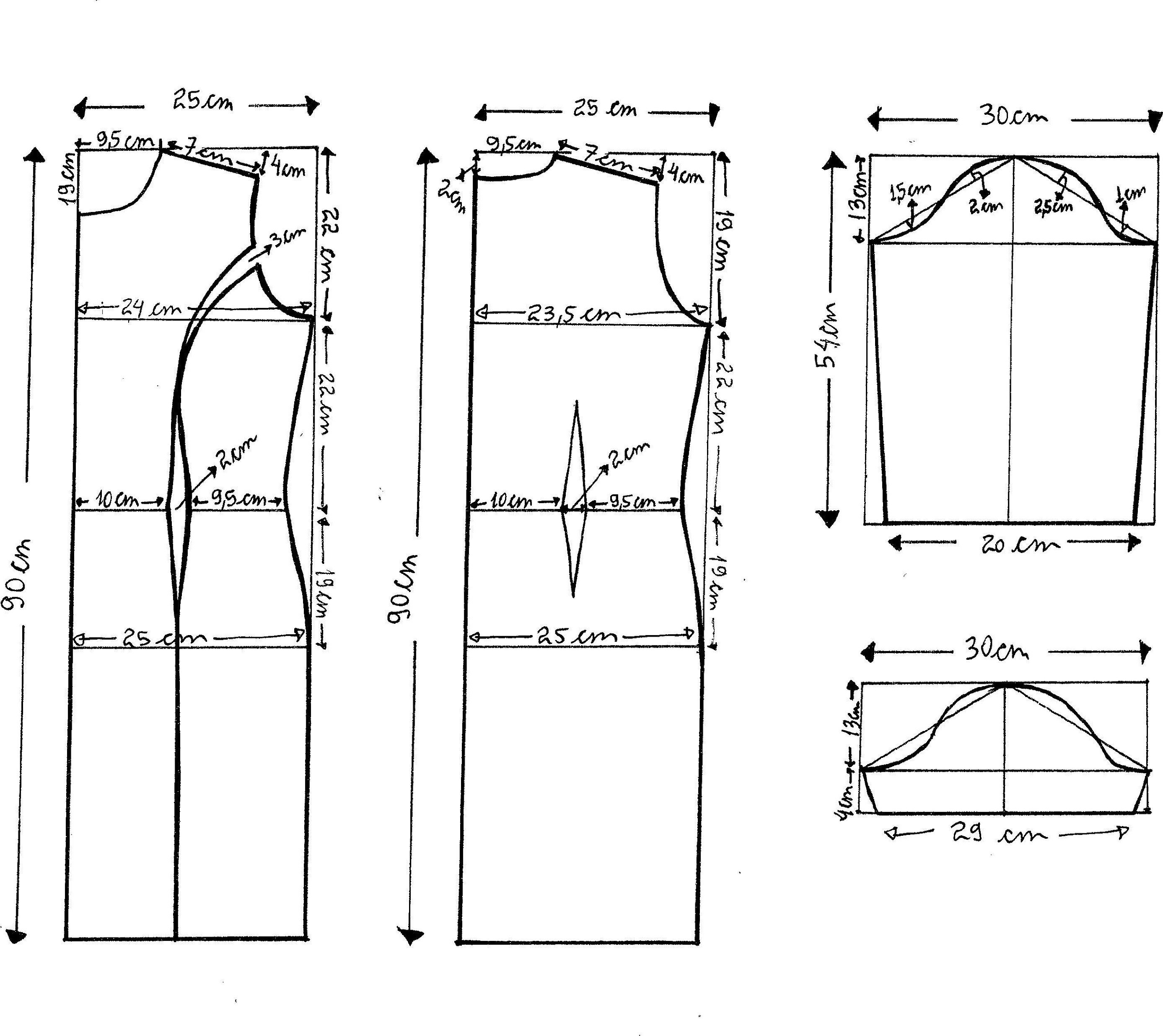
It is worth noting that the bases for plump ladies or representatives of the stronger sex, as well as the bases for people with size s or m are made using the same method. The difference lies in the creation of the allowance and the line of the shoulder seam, which are associated with the presence of a lush bust or a full waist and belly. Therefore, the main measurements must be taken carefully.
Please note! In order not to make a mistake in the measurements of the front, wrap, back, shoulder and other things, it is worth using a special table below. It indicates the data exactly to the centimeter, which is suitable for forming a dress, jacket, sweater or even a pullover.
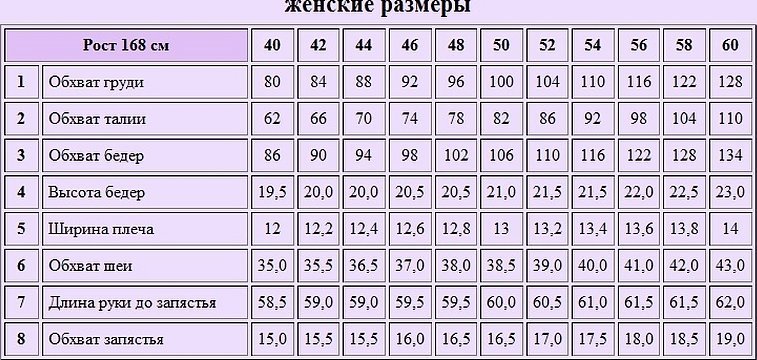
Calculation Features
When calculating the indicators for products, it is worth remembering that if for size s or m the masters add 0.5 centimeters to half the chest circumference, then for a full figure it is necessary to add 0.7-1 centimeter, depending on the exact data. This is done to avoid moving the side seam forward.
When constructing a pattern for a giselle dress of size 54, it is necessary to check the shoulder slope line, since it can be at a significant slope and spoil the entire appearance of the product. Even if it does not coincide with the shoulder line, it is necessary to raise the dart seam by 1.5 centimeters and deepen the armhole by 3 centimeters to create a blouse or a full-length dress. As for jackets with an elastic band, the deepening should be made by 4 centimeters.
Please note! To line up the side seam for an apple or sheath figure, you need to make a dart of 2.5 centimeters, and for an hourglass with a pear figure - 3 centimeters. As a result, you get a sharp side seam bend. Therefore, the width of the darts should be redistributed. If the seam deflection is one centimeter, then the side dart should be reduced by 0.7 centimeters.
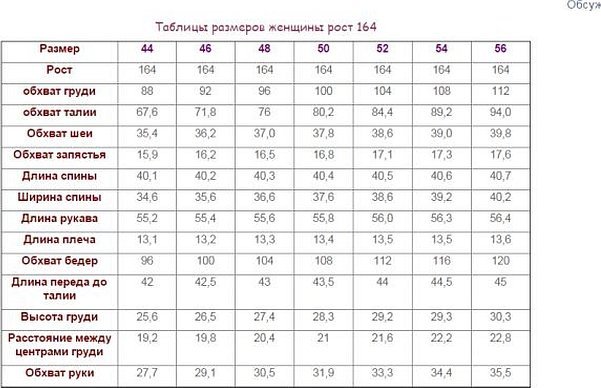
Calculations for the basis
When calculating the allowance for the free fit of the chest girth of a garment, even if it has a close-fitting silhouette, you need to write down the figure of 8 centimeters.
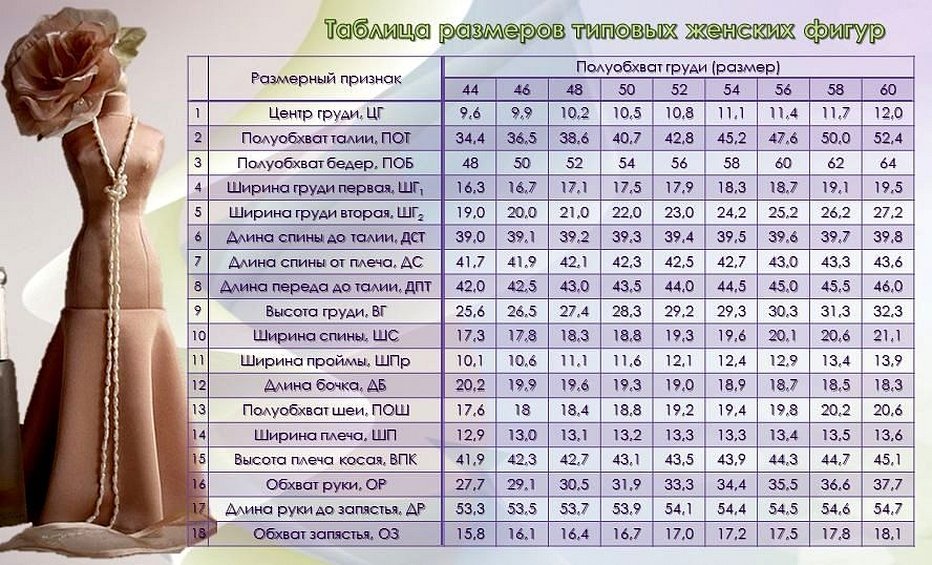
For size 50
Making a base for size 50 is as easy as for size 44-46. Just use the table below, which takes into account not only the construction of the front and back, but also the neckline, shoulders and sleeves. Thanks to it, you can create a loose, straight-cut dress, as well as a tunic and a sweater.
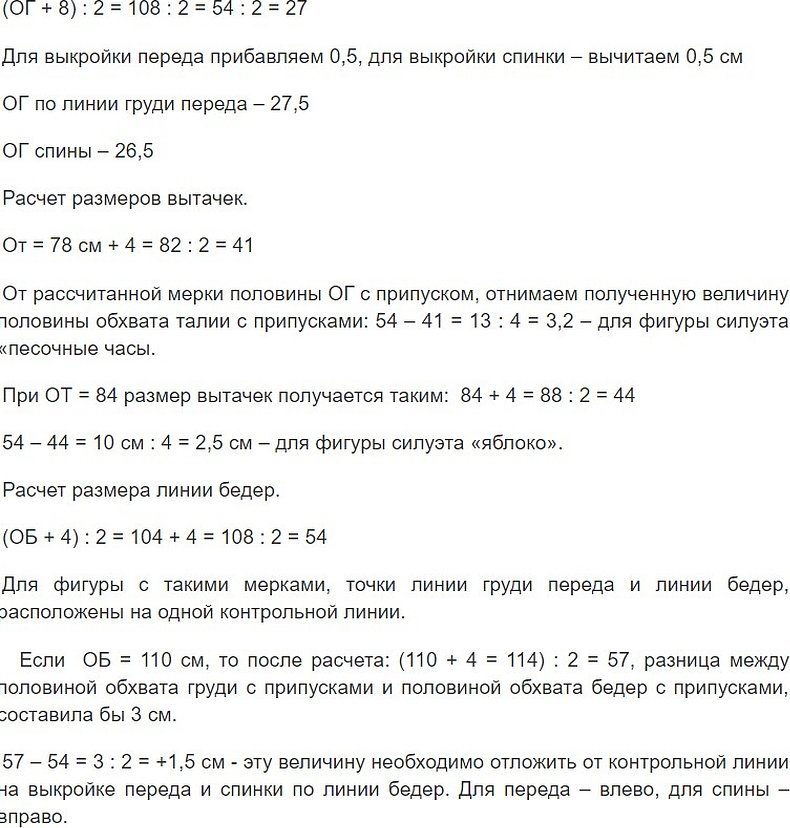
For size 52
The measurements for size 52 are similar to the above measurements. You can see them in the diagram below. According to it, the dart should be made two centimeters each.
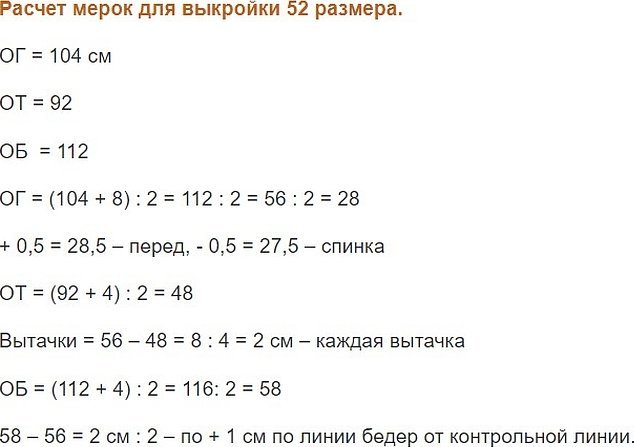
For size 54
When creating a measurement for a dress of size 54, it is necessary to accurately measure the length of the product, the depth of the armhole, the width of the back, the half-girth of the chest and waist, the height of the shoulder of the back, the length of the side and the length of the sleeve. All the necessary data for a specific size are given in the table below.
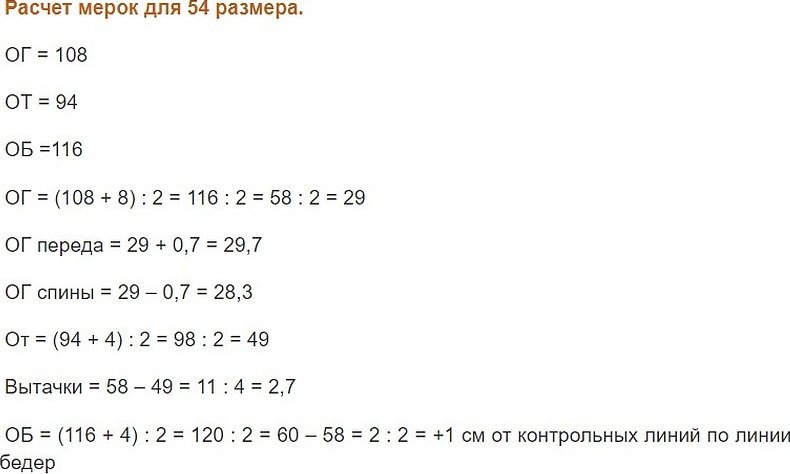
For size 56
When taking measurements for an elegant casual or formal dress, remember to leave 4 centimeters in the chest area and 3 centimeters in the hip area. When creating small allowances, the material can be thrown away, since it will no longer be possible to sharpen it along the length of the product. You will only need to make an insert from another material and try to create a new design. When creating an armhole that is too deep, you will also need to spend money on buying new material.
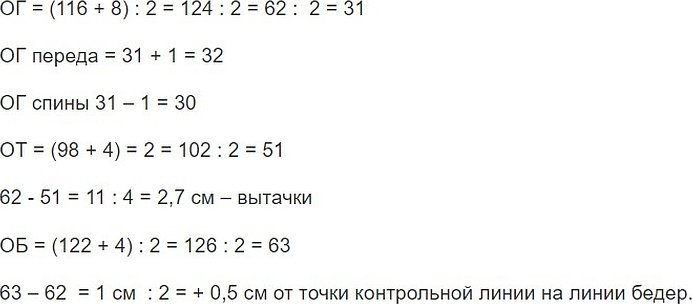
For size 58
The main thing when creating the correct measurement for a dress of size 58 is to correctly measure all the data between the points. The task is to build a three-dimensional figure on a flat sheet of paper. In order to construct everything correctly, it is necessary to take more individual measurements. Then the pattern will be more accurate.
Please note! It is worth noting one detail that the chest dart should be different from the protruding chest point. The neck can also be made in any shape. The main thing is not to make it too small, otherwise it will dig into the throat.
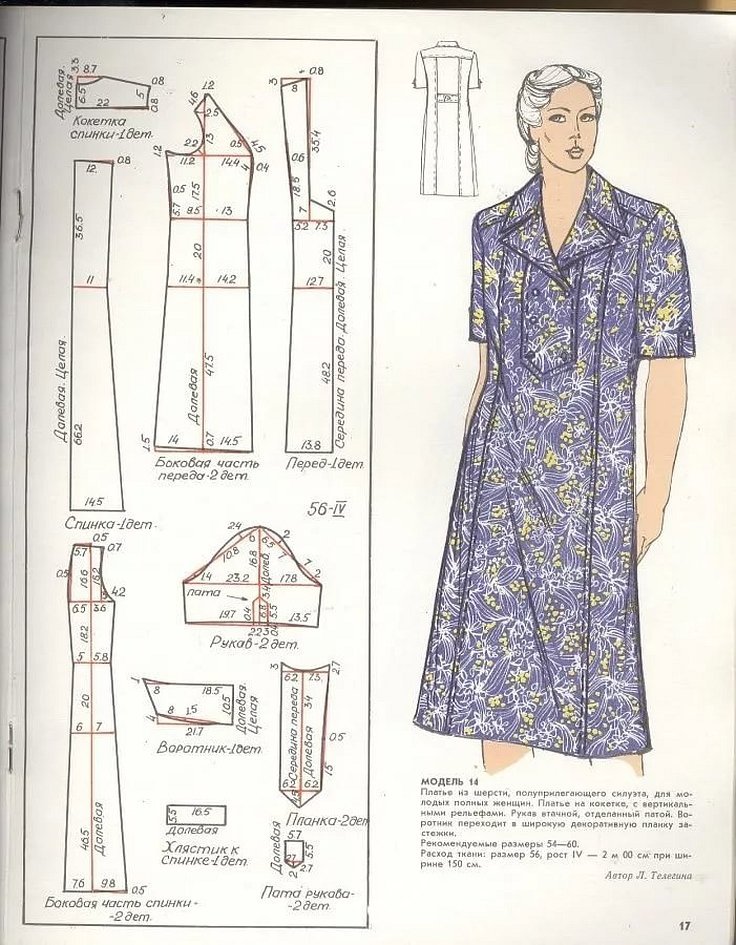
For size 60
When making a pattern for a size 60 dress, it is worth clarifying a few details. It is imperative to make a dart at the waist, sewing excess fabric into the middle of the garment. When making an outfit from stretch, you can skip the dart. A bust dart is necessary to create a convex effect. Often, it is in the chest area that the material begins to bulge on plump ladies. This property of any dress should be taken into account.
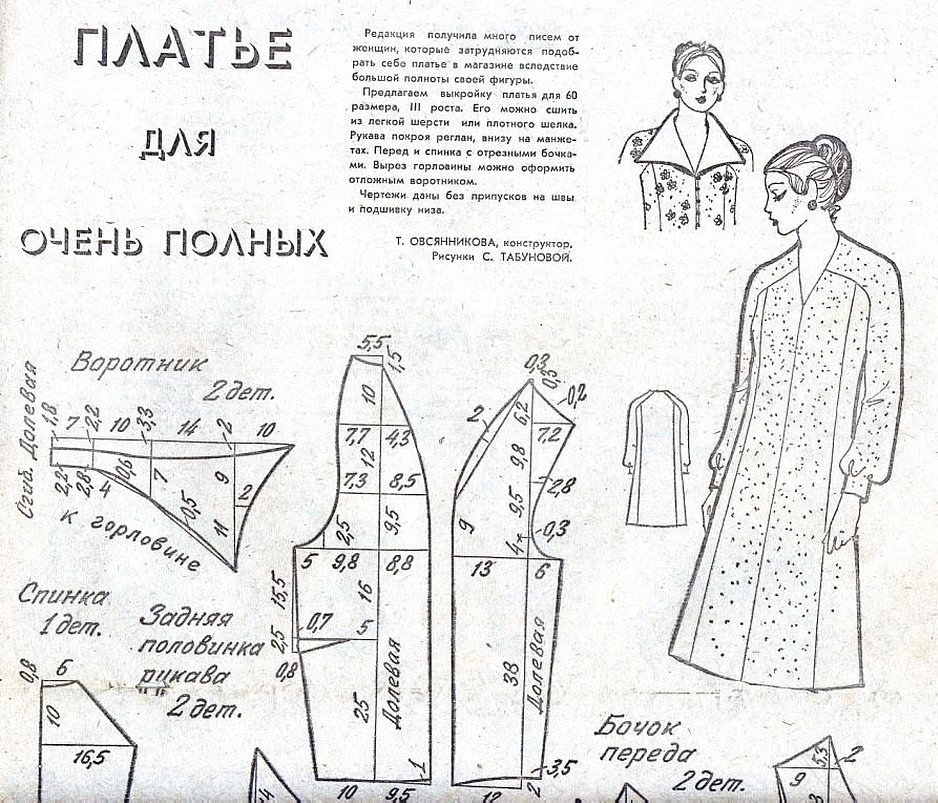
How to check the base foundation
The first fitting is best done after the bodice and skirt are ready. Before sewing them together, it is better to make sure that the product is not too short in length, does not squeeze the waist too much and make sure of such small details. In addition, after trying on, the vision of the finished item becomes clearer.
Perhaps the designer, after the first fitting, will want to make radical changes to the design of the fabric or make interesting decorative details, or use some other seam to fasten the parts together.
Please note! The first fitting is also necessary in the case that, in the event of technical errors in the calculations, something could still be corrected before the product is hopelessly ruined.

Ready-made patterns of dresses for sizes 50-60
At the moment, you can find ready-made patterns for women's size 50 on the Internet. Below are some models of regular straight-cut models. According to these measurements, you can improve dresses with various darts and decorative inserts. For example, good decor is satin ribbons, accessories in the form of a belt with jewelry inserts, as well as darts.
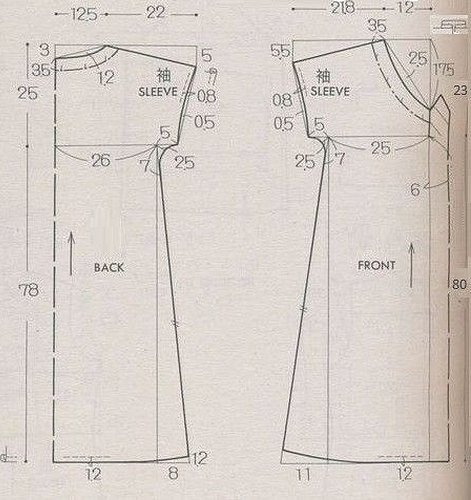
In general, it is not difficult to make a drawing based on finished products. This will be especially relevant for beginner craftsmen who are just getting acquainted with such a craft as sewing clothes. Naturally, it can be built using master classes and special schemes. Step-by-step instructions for its creation have become widespread, which can also be used. They are freely available and will help any craftsman make any product.




